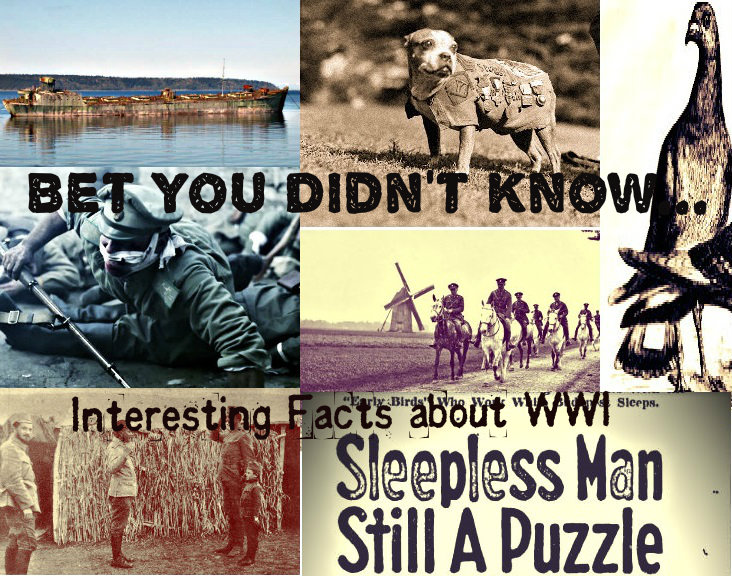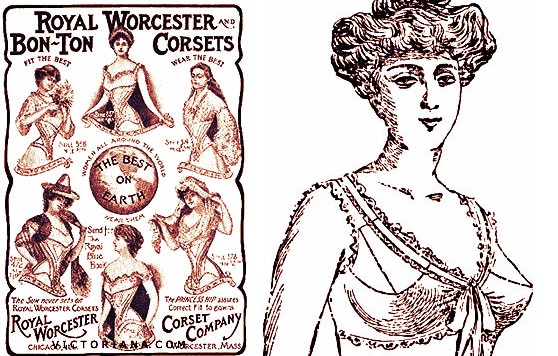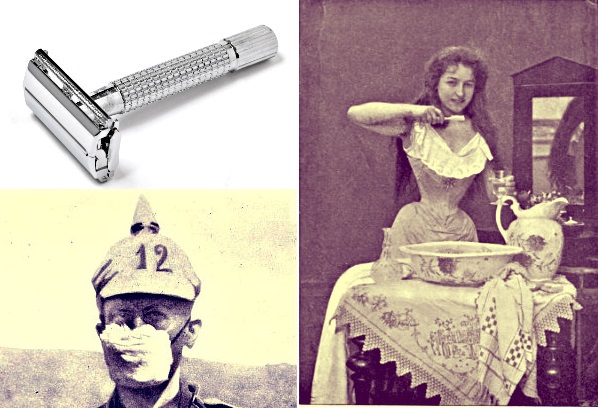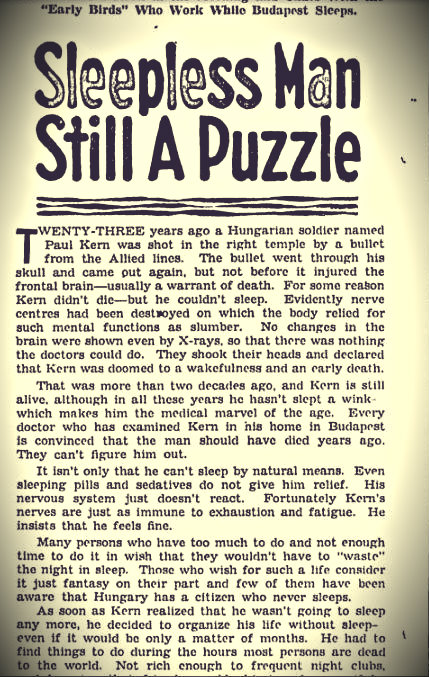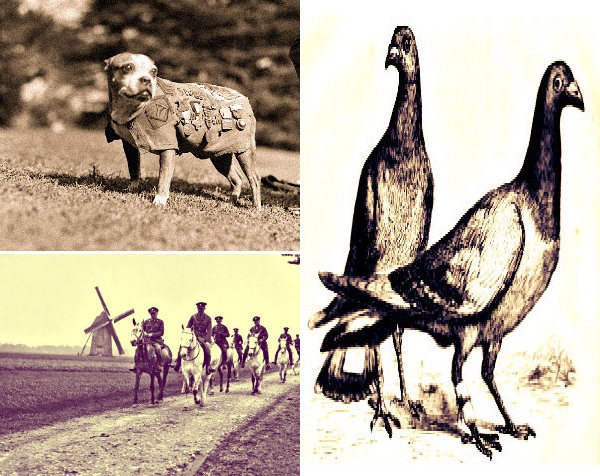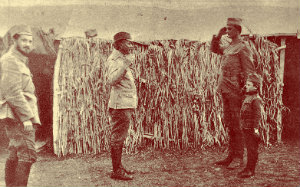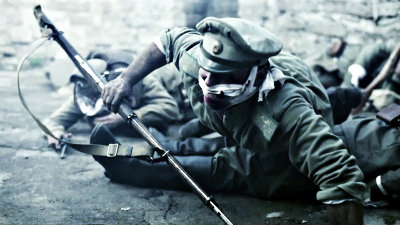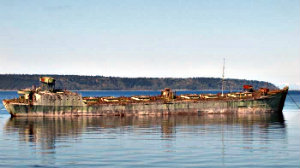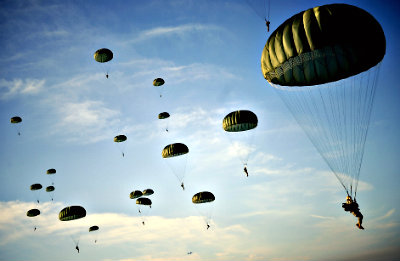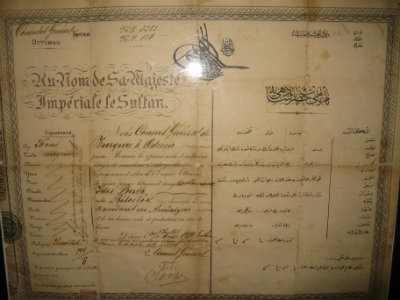Here’s a list of little known yet very interesting facts about the century-old First World War, the first conflict fought on a global scale.
Interesting Fact 1: WWI saw the fall of corset use and the rise of bra. As a matter of fact, the lingerie industry use measurements taken from the uniforms of WWI soldiers for bra sizes UNTIL NOW.
Because of the great demand for metal during the First World War, the use of corsets waned and bra became the “in” thing.
However, ladies, if you are faced with bra size woes, that is perfectly understandable because the bra sizes used until now were based from the upper uniform measurements of WWI soldiers.
Interesting Fact 2: Of toothbrushes, razors and Kleenexes
Before WWI broke out, Americans never had much care about their oral health and brushing teeth was not regularly practiced. When the United States joined the war and men signed up for the army, officials saw many recruits with rotting teeth they declared inadequate dental hygiene a security risk to the nation.
Safety razors were invented way back in the late 18th century but only became popular when WWI broke out. It was so because Gillette approached the US Armed Forces and struck out a deal to include Gillette safety razors and blades in every enlisted man’s standard issued gear.
On the other hand, tissues manufactured by Kleenex were employed as gas mask filters during the Great War.
Interesting Fact 3: The mysterious sleepless man — WWI soldier Paul Kern.
Paul Kern was a Hungarian soldier who served during the Great War. During the said conflict, he was shot in the right temple injuring his frontal brain and doctors deemed him as good as dead because of that. However, Kern did not die. He just acquired a new ability — his inability to fall asleep.
The doctors who examined him doomed him again to an early death due to his new lifestyle spent in “wakefulness”. But over two decades came and went and Paul Kern still lived without sleeping a wink throughout those times. He became a medical marvel in his time due to that.
Interesting Fact 4: The animals’ contribution to WWI efforts
The Great War didn’t only involve men in fighting; animals were also involved as well.
As a matter of fact, the number of horses who died during the First World War in the Western Front would come in par to the number of soldiers lost — about 8 million.
The Great War also had animal heroes. One such example was Cher Ami, a messenger pigeon during the conflict. One time, he saved 198 soldiers despite being wounded himself.
Another great animal hero during the Great War was Stubby, the first dog to be given rank within the US Armed Forces. Stubby had the ability to sense gas poisoning even before it was carried out, had the knack of finding wounded soldiers in no-man’s-land and once caught a German spy. He was a Purple Heart recipient and received other war decorations as well for his bravery and loyalty.
Interesting Fact 5: The youngest WWI serviceman was only 8.
Momčilo Gavrić was a corporal in the Serbian Army at the very young age of 8. At 10, he was promoted to the rank of Lance Sergeant.
Momčilo Gavrić came into the Serbian Army after his family was massacred by the Austro-Hungarian soldiers and his home set on fire during the outbreak of WWI. He is considered to be the youngest soldier to have served during the First World War.
Interesting Fact 6: There was an “attack of the dead men”, literally, during WWI.
The Osowiec Fortress became the battleground to one of WWI’s most interesting fights — the one dubbed as the “attack of the dead men”. The fight was between the Russians and the Germans.
It was in August 6, 1915 when the Germans decided to use poison gases against the Russian troops who defended the fortress. After the gassing, thinking that they had killed their enemies, the former began advancing. To their surprise and utter horror, what was left of the Russian army – just about 60 men – counter-attacked. Their uniforms were blood-stained as they were coughing up blood due to the poison gases thrown to them earlier which damaged their lung tissues.
The Germans, in fear of this “army of dead men”, ran for their lives.
Interesting Fact 7: The rise of the concrete ships
Yes, there are ships made of concrete still in existence up to this day. They date as far back as WWI and WWII. Concrete ships were built during the Great War as there was steel shortage during the said conflict.
To date, there are only ten remaining concrete ships in existence and only one of them, the SS Peralta, comes from the WWI-era. These concrete ships now serve as a huge floating breakwater on the Malaspina Strait which is situated in the city of Powell River in British Columbia, Canada.
Interesting Fact 8: Branded a coward
Parachutes were apparently already in existence during the First World War. However, he life-saving gear was not a standard issue in the British and American armies. Army officers and the pilot themselves believed it was cowardly to use a parachute and thought that the contraption only encouraged the flyers to abandon their planes when they caught fire or were attacked instead of bringing them to the ground.
Parachutes were issued to American pilots only a year after WWI ended — in 1919.
Interesting Fact 9: The need for passports
Travelers needn’t have passports before WWI broke out. They could go just about to any country without having have to bring any identifying documents.
However, when WWI broke out, borders started closing and border inspections began to be implemented. Thus, the precursor to the modern passport – an identification paper with a photograph pasted on it – was born out of that need.
Interesting Fact 10: The anomaly of numbers
Harry Patch, the last male WWI veteran died in July 25, 2009 at the age of exactly 111 years, 1 month, 1 week and 1 day. Oddly enough, the First World War also ended on the 11th day of the 11th month [November] at exactly the 11th hour.
